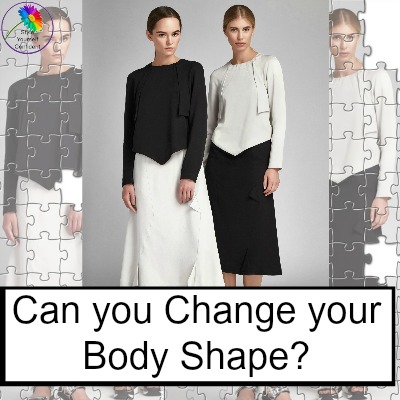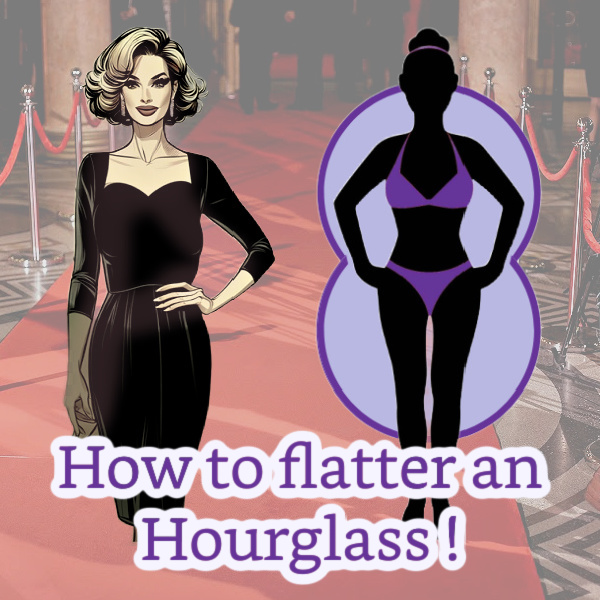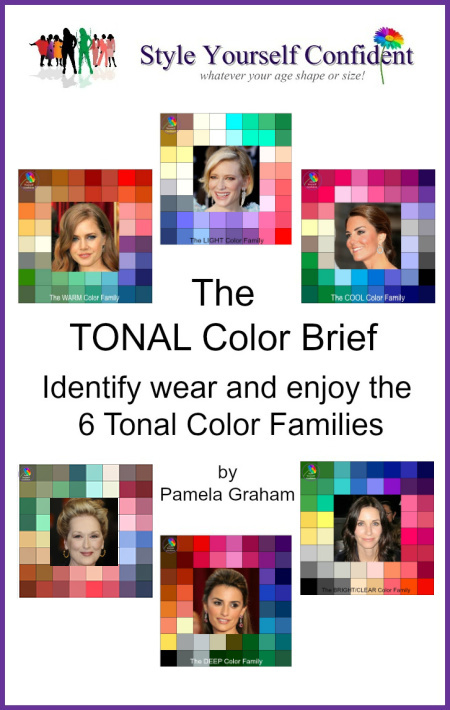Royal Fashion - the Tudors
I've been delving into the History of Royal Fashion and I have to say that history + royalty makes for a romantic duo! I hope you enjoy it.
Starting with the Tudors, probably the most well-known monarchs in English history, over the next few issues I shall be exploring how British royalty have influenced fashion over the last 500 years.
We shall come right up to date with Queen Elizabeth II and the elegant Duchess of Cambridge.
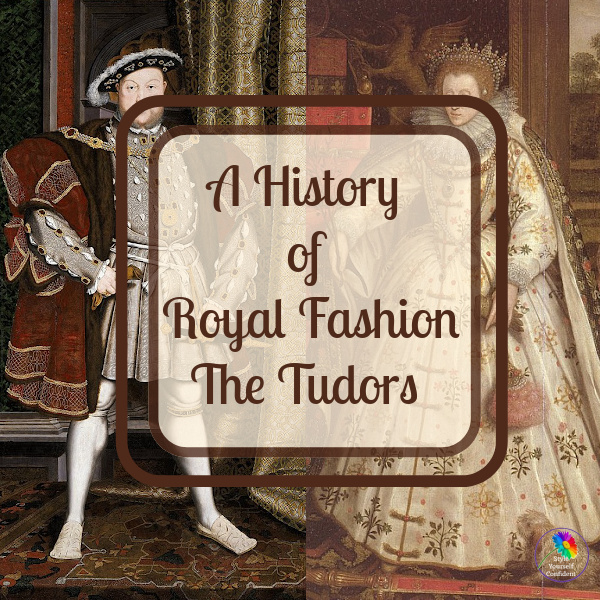
Henry VIII
In all there were five Tudor monarchs but the best known were Henry VIII and his daughter Elizabeth I. They were considered to be the original 'power dressers' using fashion and color to impress and control how their subjects behaved.
Henry, an indulged second son, was attractive and charismatic with little training for Kingship. He inherited the crown and enough money to create a splendid court and finance his forays in largely unsuccessful wars.
Henry was extravagant and extremely vain favoring cloth of gold and highly decorated velvet and brocades. Wearing gold and purple was limited to the Royal Family, and no-one was allowed to outshine the King!
Early in his reign Henry introduced the Sumptuary Law which dictated which styles and colors people could wear, depending on their level of society. Poor people dressed plainly. Men wore wool trousers and a simple tunic to just above the knee while women wore a long woollen dress, usually covered by an apron, with a cloth bonnet on their head. It meant that social status was immediately obvious by the way they dressed and punishment for non compliance could be severe.
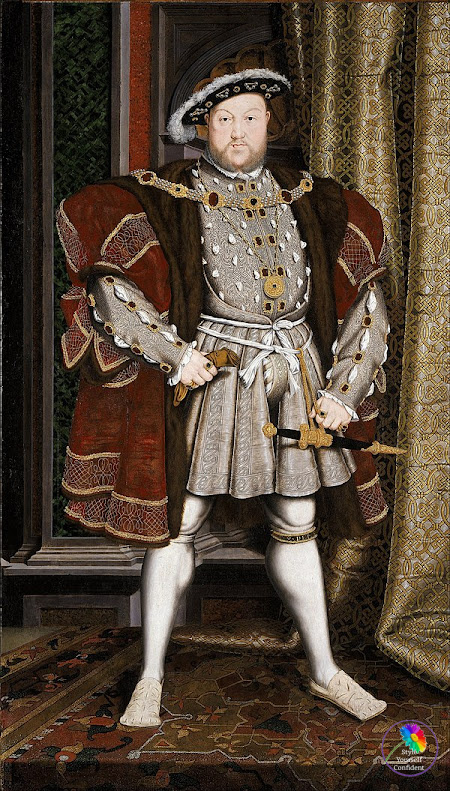 Henry VIII
Henry VIIIHenry's wardrobe
Rivalry grew between Henry and the King of France as to who had the best dressed court. Men wore increasingly ornate multi-layered outfits in luxurious fabrics; wide shoulders with puffed sleeves and richly embroidered ruffled shirts.
Male clothing of the time was typically doublet and hose (jacket, breeches and long socks) and the rich dressed to show off what they could afford.
Henry's padded doublet (above) has little cuts in it called slashes which allowed the small puffs of his white linen undershirt to be pulled through and make an interesting design. It also has real jewels sewn in such as sapphires and rubies.
The huge wide shoulders are padded with whale bone and cotton stuffing and the fur is mink allowing Henry to look very strong, powerful and wealthy. As Henry aged and grew fatter, a large frame became fashionable as courtiers began to wear padded doublets to emulate the size of the King.
The 6 wives of Henry VIII
Henry VIII had 6 wives and, desperate to father a son, he plotted mercilessly to move onto the next! Each of his Queens brought their own distinct style.
Women needed lots of help to dress as there were few fastenings, only hooks and eyes and ties. Rich fabrics were highly valued and it's known that Henry handed down furs, jewels and expensive accessories from wife to wife!
Catherine of Aragon, before marriage to the young Henry, was originally betrothed to the elder son who died.
She introduced Spanish style with heavily decorated and elaborate gowns and the hooped farthingale (see image below) for an entirely new silhouette. A devout Catholic, she wore a heavy gable hood to cover her hair and a heavily jewelled cross around her neck.
Catherine passed the Sumptuary law for women too although fine fabric was beyond the pocket of most in any case.
Although Catherine lost many babies, her only living child was Mary (Mary I) but, in pursuit of a son, Henry divorced her against a Church ruling after 23 years.
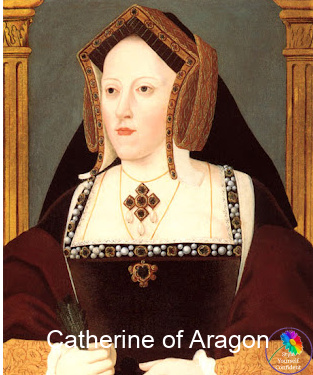
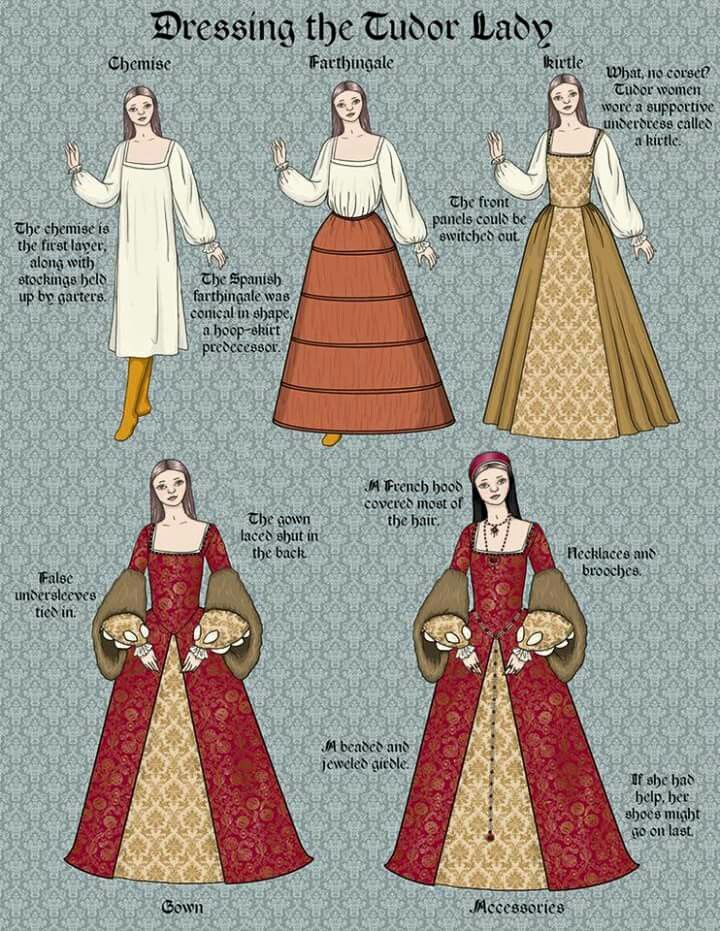 The new silhouette with the farthingale petticoat hoop
The new silhouette with the farthingale petticoat hoopAnne Boleyn was pursued by Henry and showered with expensive gifts for some years before she capitulated and eventually became pregnant. Henry broke with the Church of Rome to divorce Catherine and marry Anne. She was extremely fashion conscious after time at the French court and her style was more graceful. She wore the smaller French hood rather like a padded headband studded with pearls, similar to ones worn by the Duchess of Cambridge in recent years, and a letter B around her neck; both appear very up to date.
Anne also produced a daughter who became Elizabeth I and, in spite of the black satin nightgowns he bought her, Henry tired of her temper, her misdemeanors and her inability to bear a son. She was charged with treason and beheaded.
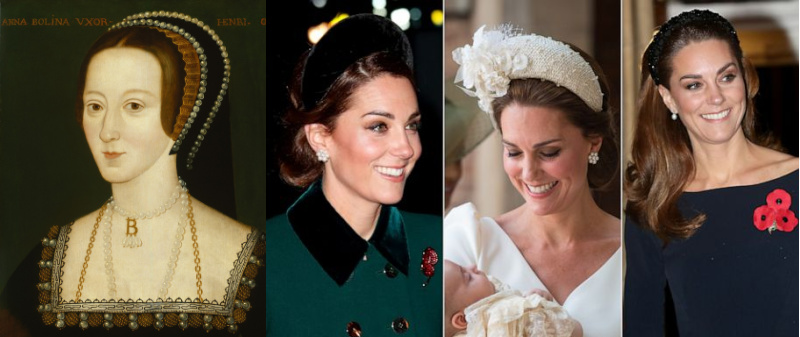 Anne Boleyn an early 'influencer' and our own Catherine Duchess of Cambridge wearing a similar padded headband
Anne Boleyn an early 'influencer' and our own Catherine Duchess of Cambridge wearing a similar padded headbandJane Seymour was more virtuous refusing to be Henry's mistress. Once married she re-introduced English fashion banning the French style. Her marriage was short-lived but she produced the longed-for heir, the future King Edward VI, before dying of the results of childbirth.
Anne of Cleves was chosen by Henry from a portrait as part of a political alliance, although, once she arrived in England, he was far from pleased. Anne certainly wore a heavy German style which was unflattering and disliked at the English court. The marriage appears to have been unconsummated after 6 months and the marriage was annulled, apparently amicably.
Catherine Howard was only 17, a lady in waiting to Queen Anne, with an ambitious family who encouraged Henry's interest in the vivacious but flighty girl. They married just 19 days after his annulment and Henry indulged Catherine with clothes and expensive jewels which she flaunted to everyone's displeasure. Several previous and current indiscretions were discovered and, in little more than a year, she was charged with treason for adultery and beheaded.
Katherine Parr was the last of Henry's wives and, at 31, had been married twice before. She was a well educated lady, fond of music and fine clothes, jewelry and numerous pairs of shoes! Her favorite colors for clothes were crimson and cloth of gold and she ordered matching outfits for the royal children and herself. She is remembered for bringing together Henry's 3 children as a family and remained married to Henry as his health deteriorated ultimately outliving him.
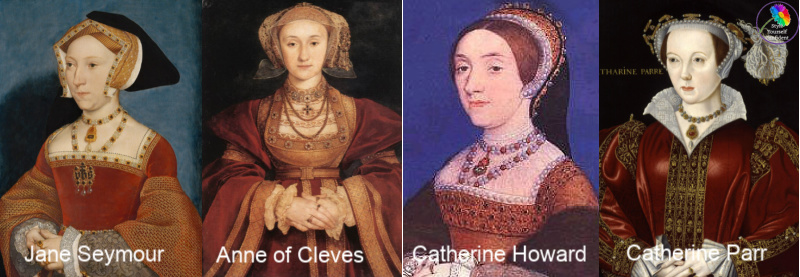
Elizabeth I
Both Edward and Mary had short reigns and, although she had been previously been declared illegitimate, Elizabeth I came to the throne in 1558. Elizabeth was as image-conscious as her father and had a great influence on fashion although by the time she came to the throne there was less money available and she was forced to be more restrained. However, she still spent substantially on opulent fabrics and was often 'thick with jewels' - it was important that she dressed more magnificently than anyone else.
She had clothes in all colors but her favorites were black and white, which she wore much of the time, symbolizing viriginity and purity. Her maids were dressed to complement the Queen, not to outshine her.
Getting dressed was a lengthy affair; Elizabeth would typically wear a chemise, a stiffened corset, a petticoat, a farthingale, stockings and a gown. Sleeves, often beautifully decorated, were added separately and could be used to accessorize different gowns. Later on a neck ruff and wrist ruffs were also added.
To venture out of doors she would wear rich velvet cloaks and gloves and would always shield her fair skin from the sun.
It is said that Elizabeth was fond of a 'pretty leg' and her male courtiers were in constant rivalry trying to attract the Queen's attention with their fashionable outfits.
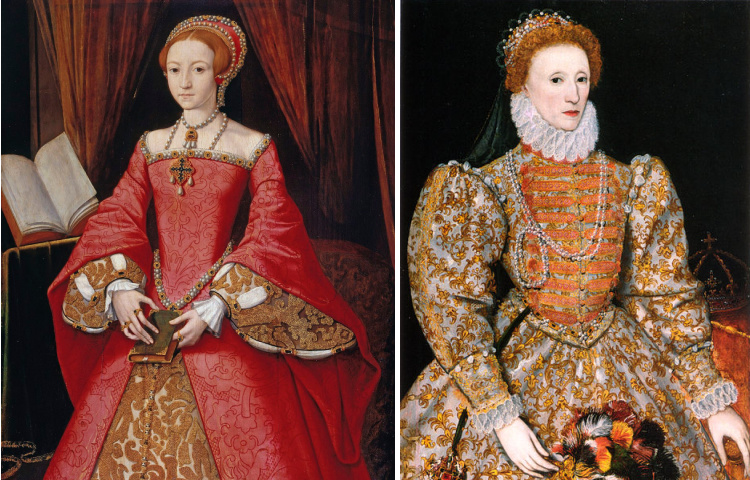
Her grooming and makeup
Makeup was not a trend in either Henry's time or Elizabeth's early years but, following an attack of smallpox in 1562 she began to wear a heavy makeup to cover up the scars on her face. She painted her face with white lead and vinegar, applied rouge to her lips and painted her cheeks with red henna and egg white.
Lead, also used in face cream, was very bad for the health as it slowly poisoned the body. Of course any trends were followed by her courtiers.
Dental care was virtually unknown and Elizabeth had several teeth removed as she aged. To prevent hollow cheeks rags would be stuffed into the mouth!
Elizabeth wore a wig from a young age and it became very fashionable.
Tudor hygiene was not quite as primitive as we might think and royalty would certainly have had bathrooms in some of the palaces, even though they might not have used them regularly.
Everyone wore an undergarment called a smock or a shirt and, to keep body and clothes as clean as possible, they changed them frequently.
What has been preserved?
Because of the intrinsic value of quality fabric and clothing items they would have been fitted with new sleeves, bodices or collars to update them and so get as much use as possible.
Gowns and accessories were then handed down, reused, gifted, recycled etc. After nearly 500 years, only a small fraction have survived and so our knowledge of Tudor costume is limited.
It's thought that some original fabrics, however, may still survive today as cushions in stately homes.
Although I've gone for the main points of interest in this feature, if you find this interesting there is a excellent free course online at www.futurelearn.com
Homepage >> History of Royal Fashion >> The Tudors


